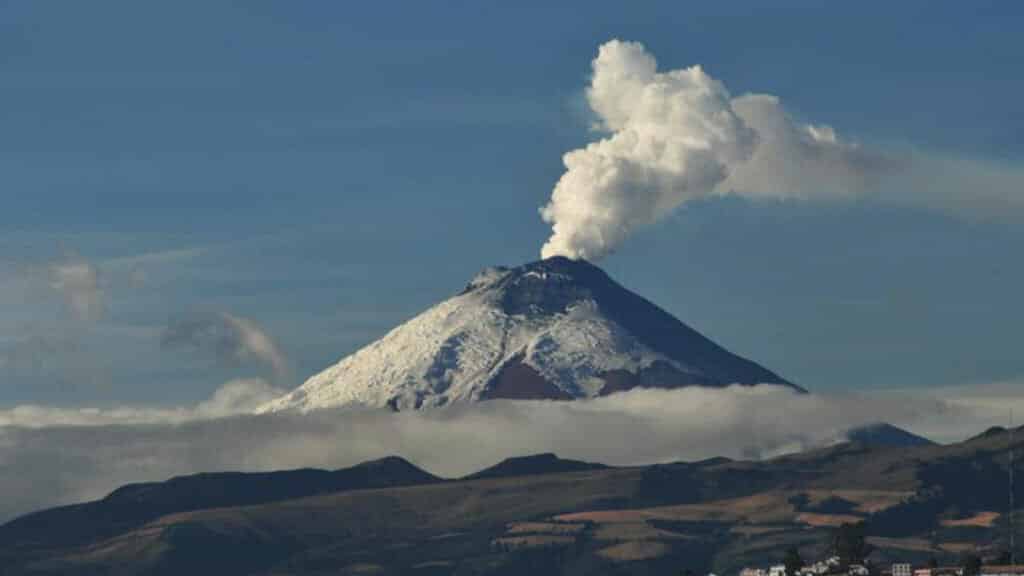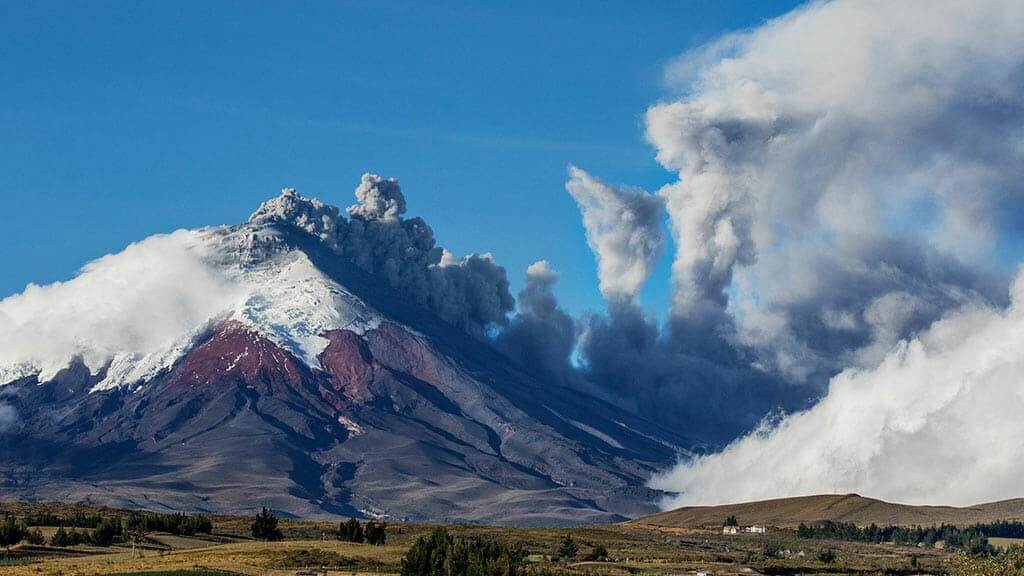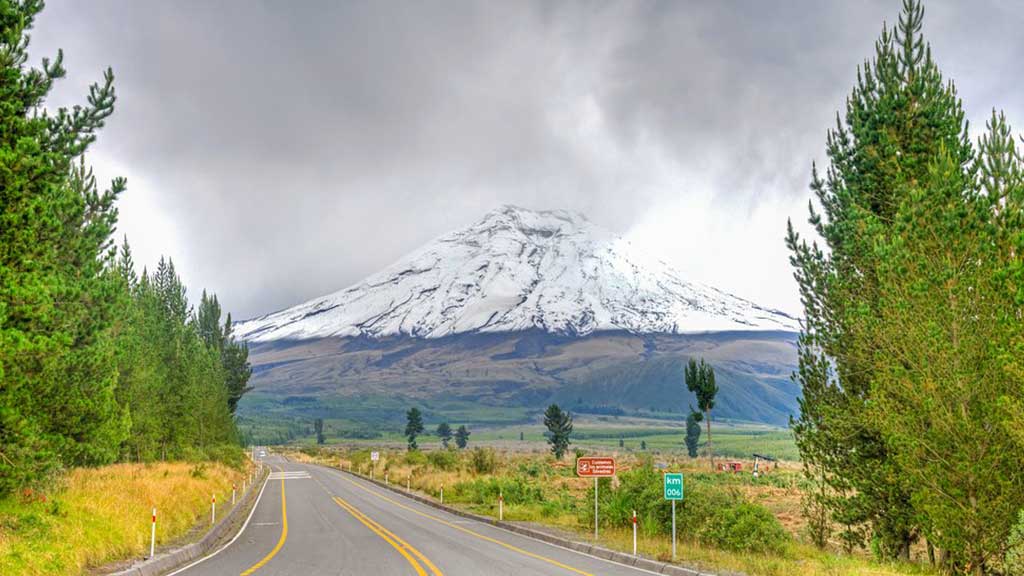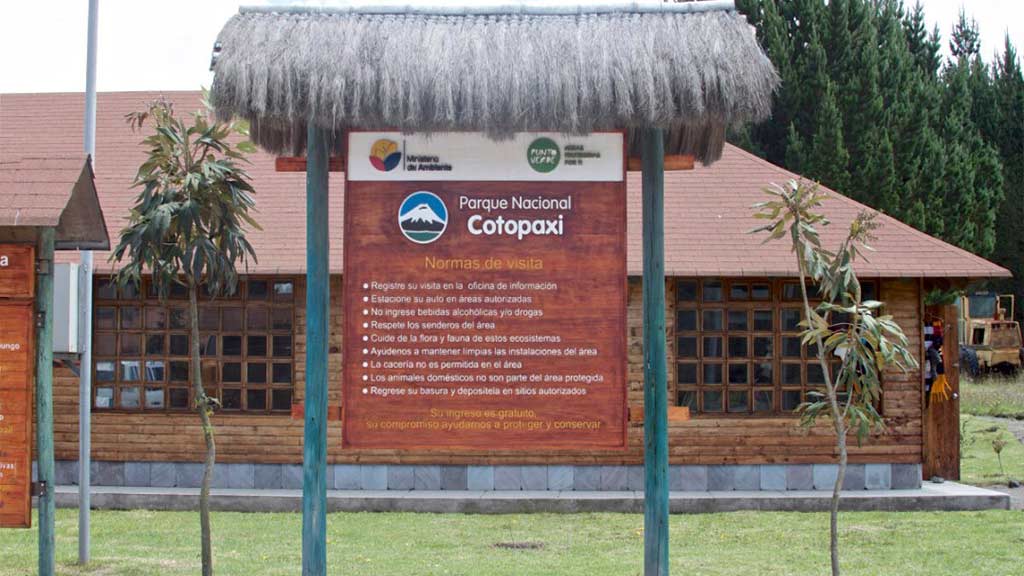Cotopaxi Volcano National Park
Cotopaxi volcano is THE iconic peak of Ecuador’s Andes. Like Mount Fuji in Japan, there’s something about the perfectly symmetrical snow-capped cone that catches the eye and imagination. Cotopaxi has lured climbing enthusiasts and tourists for centuries, and the surrounding parkland is great for adventure and wildlife spotting too. Without a doubt, Cotopaxi National Park one of the must-sees for visitors to Ecuador!
Keep reading for the ultimate visitor guide to Cotopaxi National Park. Everything you need to make your trip a success - from trip planning to popular activities and travel paracticalities.
SECURE YOUR ECUADOR TRAVEL
Get a FREE personalised quote today
Everything You Need to Know About Cotopaxi Volcano
Before we get into the nitty gritty of how to visit, let’s kick-off with some fast facts about Cotopaxi Volcano and the surrounding national parkland.
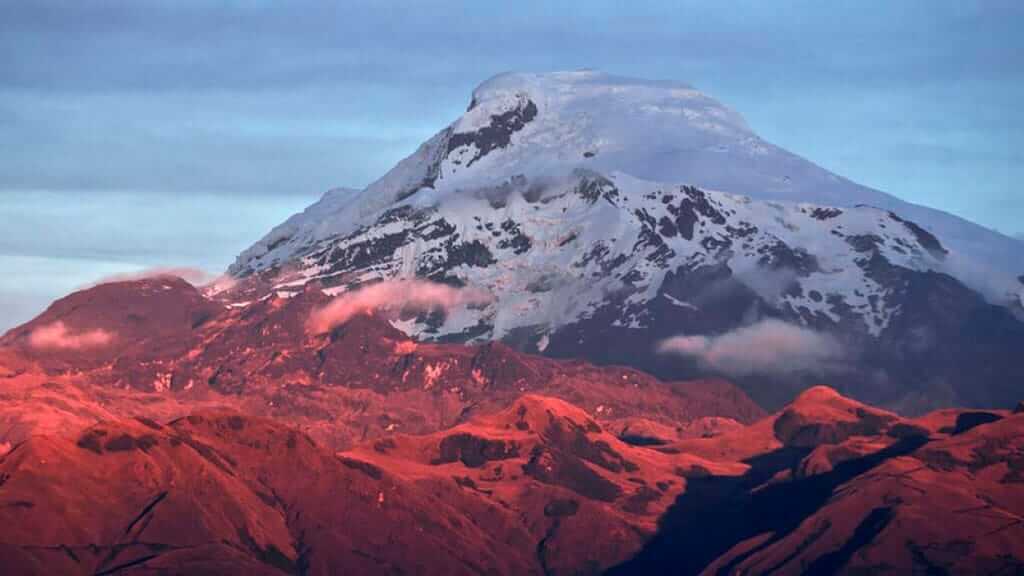
Where is Cotopaxi Volcano?
High up in the Andes mountains, Cotopaxi National Park lies just 50 km (31 miles) due south from Ecuador’s capital city Quito. On a clear day it’s even possible to see the Cotopaxi’s impressive, towering peak from the city.
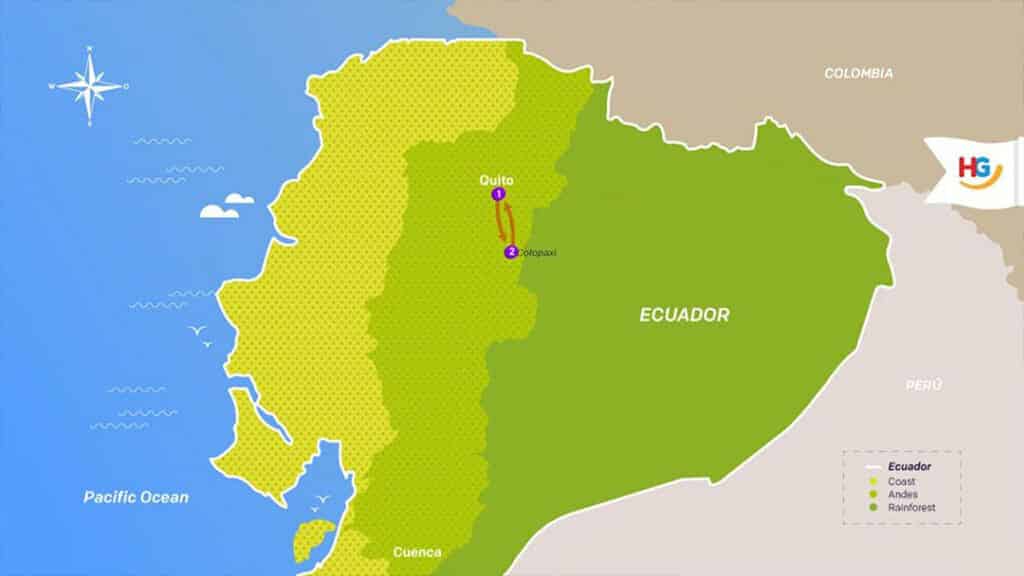
How Big is Cotopaxi National Park?
In total Cotopaxi National Park covers an area of almost 334 square kilometers. The entire area is protected, and is large enough to overlap 3 different provinces – Cotopaxi, Napo and Pichincha.
Cotopaxi is not the only volcano in this region of the Andes. In fact, renowned German explorer and naturalist, Alexander Von Humboldt, found so many volcanoes here that he created the name for Ecuador’s “Avenue of the Volcanoes”.
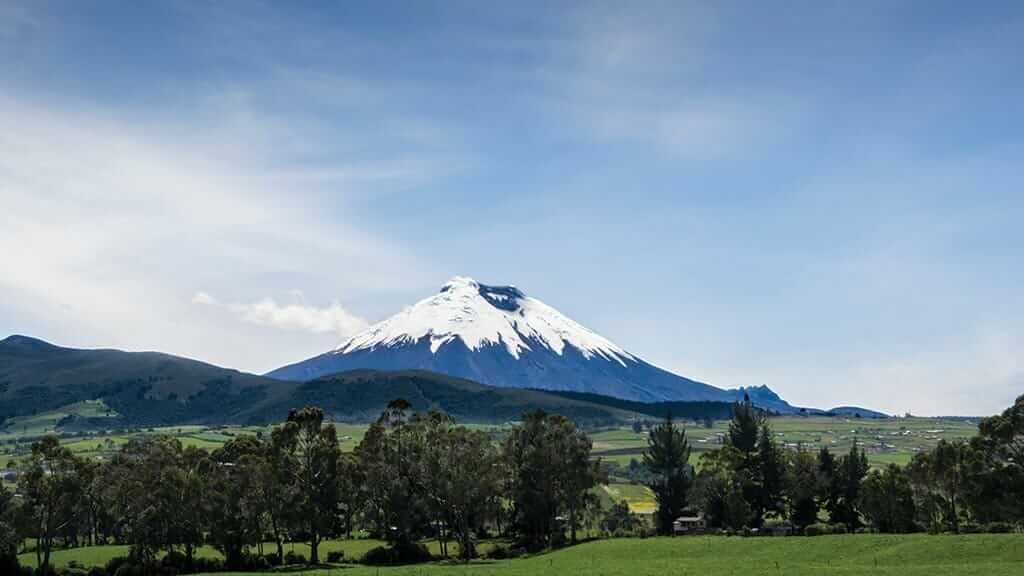
Other volcanic peaks to look out for in the region around Cotopaxi include: Corazon, Ruminahui, Pasachoa, Illinizas, Sincholagua and Quilotoa.
To the north, try to spot Pichincha, Cayambe, Cotacachi and Antisana.
Further south we find explosive Tungurahua, El Altar, Sangay and Ecuador’s tallest peak Chimborazo (6,310 meters).
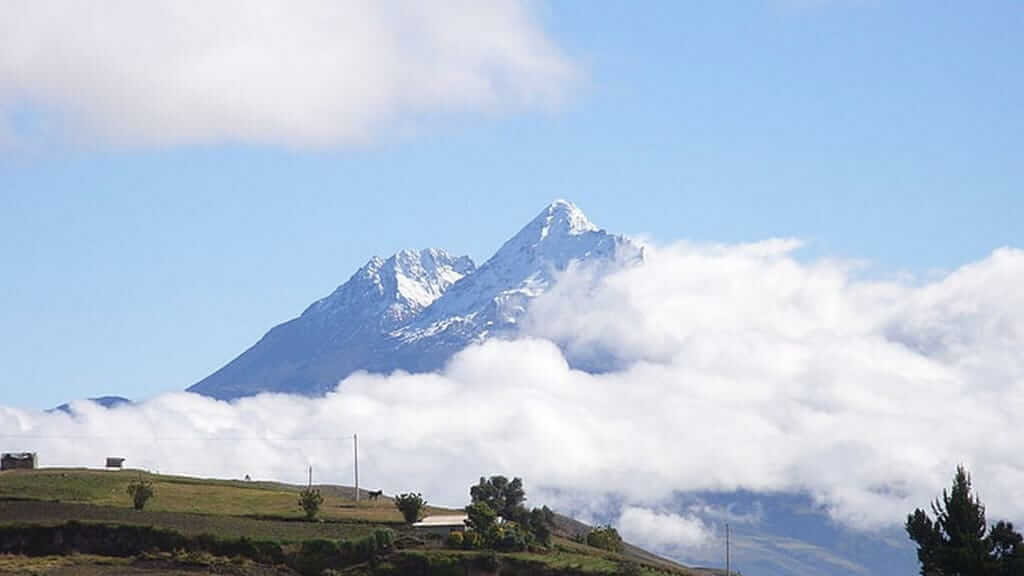
How High is Cotopaxi Volcano
The summit of Cotopaxi Volcano measures in at a height of 5,897 meters (19,347 ft). This makes it Ecuador’s second highest peak (after Chimborazo Volcano), and one of tallest active volcanoes on the planet.
Cotopaxi volcano is also large in terms of mass, with a width at its base of around 23 km (14 miles).

What Type of Volcano is Cotopaxi?
Cotopaxi is an excellent example of a stratovolcano (also known as composite volcano). In simple terms, stratovolcanoes are tall and conical in shape with steep slopes. They form over time from multiple deposits of lava, ash and debris.
The build up of chamber gas in stratovolcanoes makes them prone to particularly violent and explosive eruptions. The lava is viscous and thick, tending to set on the slopes during an eruption, rather than reaching the base.
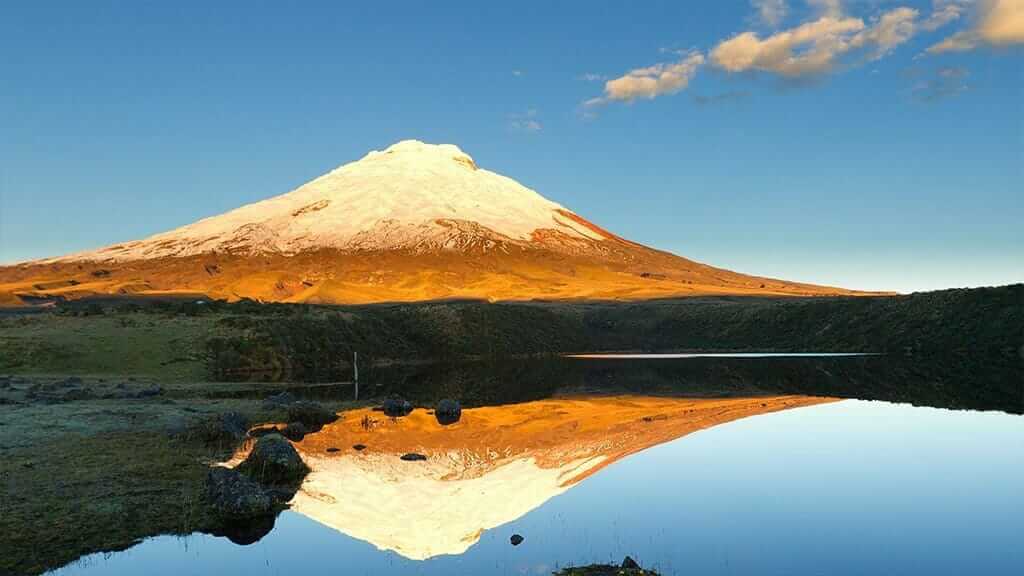
What Does Cotopaxi Mean in English
In local Quechua indian tongue, the word Cotopaxi translates literally as "neck of the moon”. This unusual name comes from the crescent moon shape of Cotopaxi’s crater.
For centuries Cotopaxi Volcano has been honored and revered as a sacred mountain by indigenous people, as far back as pre-Inca times. Locals shared a belief that the giant volcano was home to rain gods, who helped to keep the surrounding land fertile for their crops.
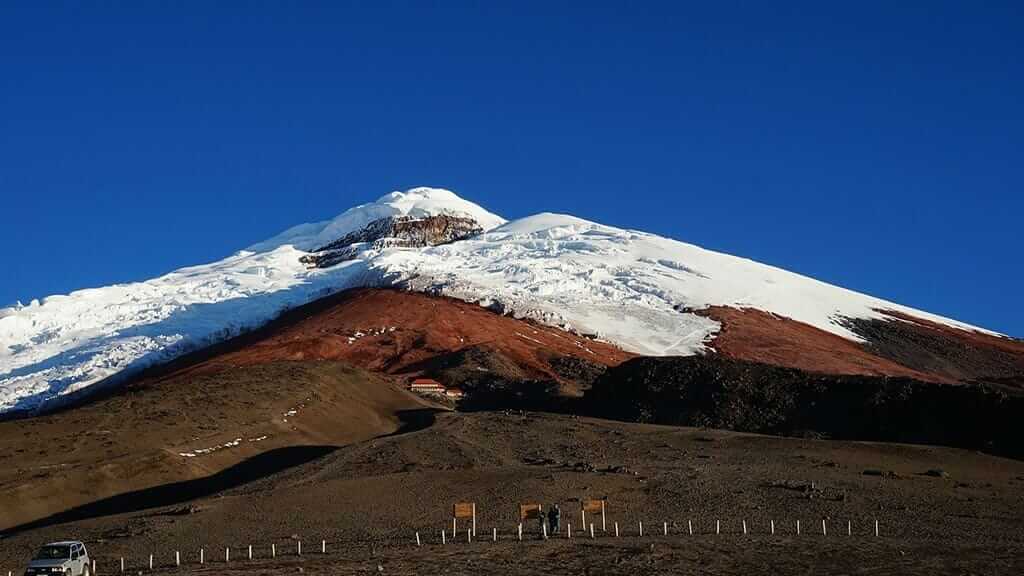
Cotopaxi Volcano Activity
Cotopaxi Volcano certainly boasts an explosive history. Records show a total of 87 historic eruptions, with varying degrees of destruction.
Pity the nearby town of Latacunga which was completely wiped out in 1744, and then again in 1768. Even worse was to follow in 1877, when intense thermal heat caused Cotopaxi’s ice cap to melt. The resulting lahars flowed at high velocity all the way to the Pacific Ocean (100 km / 62 miles), leveling poor Latacunga for a third time.
Cotopaxi Eruption 2015
Most recently, in 2015, Cotopaxi Volcano sprung into life once again. Over 2000 earth tremors were recorded, as well as ash clouds and emission of aproximately 20,000 tonnes of sulfur dioxide per day.
Although a major eruption was never forthcoming, the surrounding area was temporarily evacuated, and the valley region of Quito was on high alert for possible lahar flows over a period of 6 months.
Since then Cotopaxi is once more the sleeping giant of Ecuador.
GET FREE ADVICE
From an Ecuador destination expert todayHow to visit Cotopaxi Ecuador?
Private vehicle vs Cotopaxi tour?
Visiting Cotopaxi National Park from Quito is quite easy. Although there is no bus service into the park, it’s easy to reach by private car. Just head south on the main Panamerican Highway from Quito, and you’ll drive right past the main park entrance.
The easiest way for most foreign tourists to visit Cotopaxi though is on a private tour. Happy Gringo operate a 1 day private Cotopaxi national park tour from Quito on any day throughout the year, with flexible itinerary. We even have specialist birding guides available for birders.

How to Enter Cotopaxi National Park?
There are 2 different ways to enter the park. Most tourists visit via the main south-west gate from the Panamerican Highway. The other option is the North gate, reached by following the Pito River Canyon from Sangolqui in Quito’s valley area.
How Many Days to Visit Cotopaxi Ecuador?
Whilst many visitors spend just one day at the national park, an overnight stay is also worthy of consideration. What better way to experience
Cotopaxi than a night in a traditional hacienda within the borders of the park? A warm fire awaits to keep you nice and cosy at night, and the views of Cotopaxi Volcano are often best early in the morning.
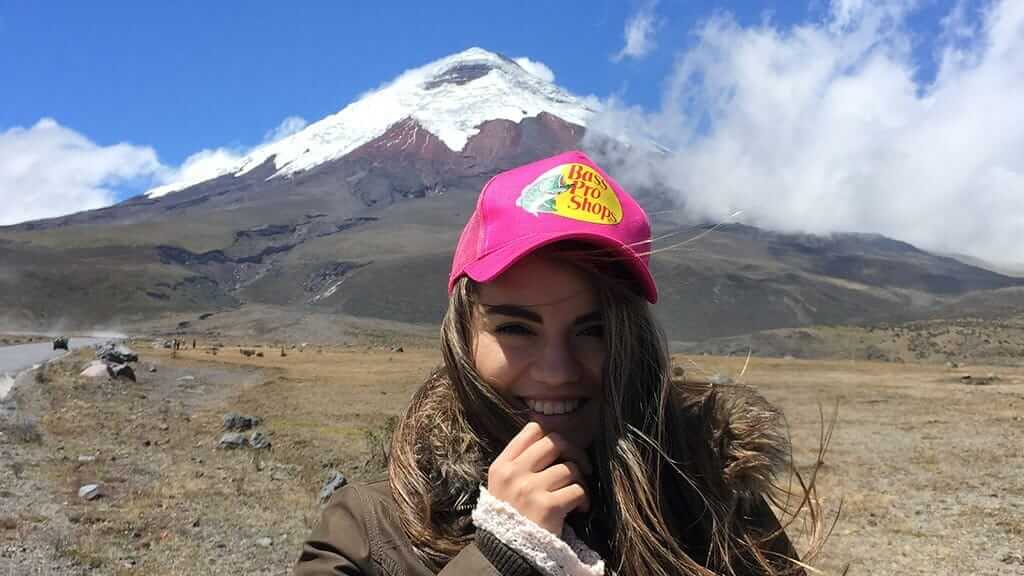
Where to Stay in Cotopaxi National Park
Visitors can choose from an array of different Cotopaxi hotel accommodation options. One can stay inside the national park itself, or in one of the small towns outside, such as Lasso or Machachi.
There are options for all budgets, from grand colonial haciendas, to farm house hostals, or even modern glamping.
Check out our Where to stay in Cotopaxi National Park blog post for our top recommendations.

Things to do in Cotopaxi National Park?
For those who enjoy the great outdoors, Cotopaxi national park is a giant playground with something for just about everyone.
Hiking Cotopaxi Ecuador
Cotopaxi day tours include hiking opportunities around Limpiopungo Lake (1 and ½ hours complete loop), and up to the snow line mountain refuge (José Ribas Refuge 4,864m). While the refuge trek may look easy from the parking lot, it’s a moderately challenging test of legs and lungs. From the refuge it’s also possible to trek further up to the snowline glacier (45mins each way).
For those with time for an overnight stay inside the park, there are many other treking routes at your disposal. Another popular choice is to climb one of the nearby peaks of Pasachoa or Ruminahui to enjoy the views.
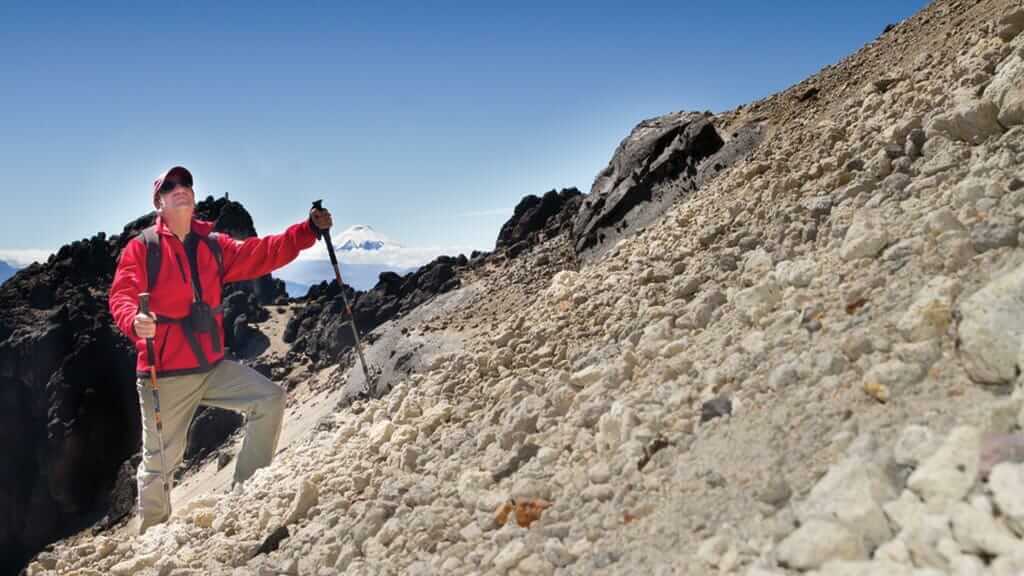
Cotopaxi Volcano Biking
Mountain biking is another popular Cotopaxi adventure. It’s not every day you get to bike down the slopes of an active volcano! Starting at the parking lot (4,600m), it’s down hill fun most of the way, then flat through the grassland plains.
Check out our Cotopaxi Volcano biking tour blog, for a detailed description of this activity.
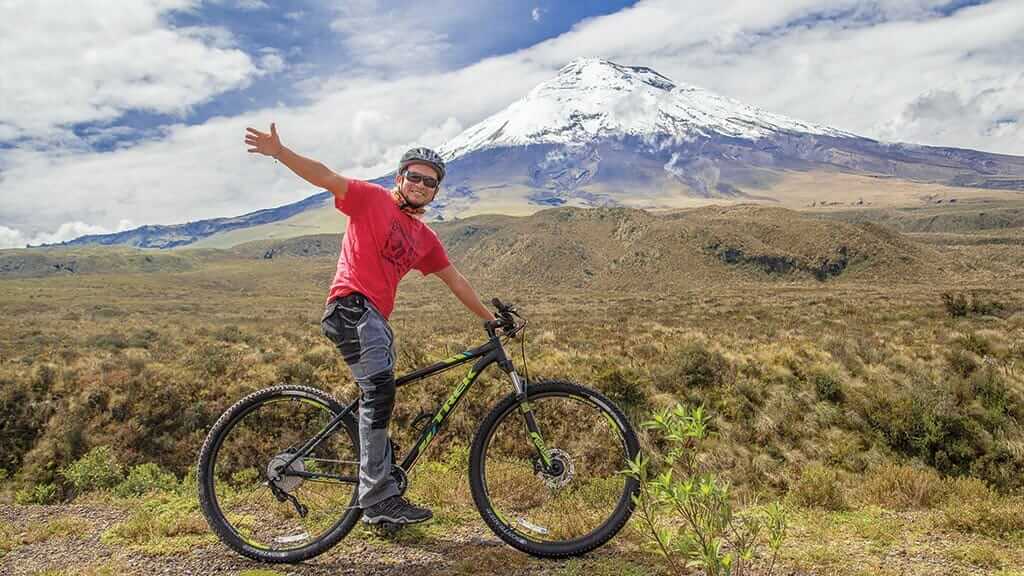
Horse Riding
The Cotopaxi area has a long association with the chagra tradition – poncho wearing Ecuadorian cowboys with well-practised riding skills. So, horseback is the perfect way to explore the parklands with locals.
Haciendas like El Porvenir Cotopaxi offer horse riding tours of varying duration. Or go the whole hog with a multi-day riding tour through La Alegria horse farm.
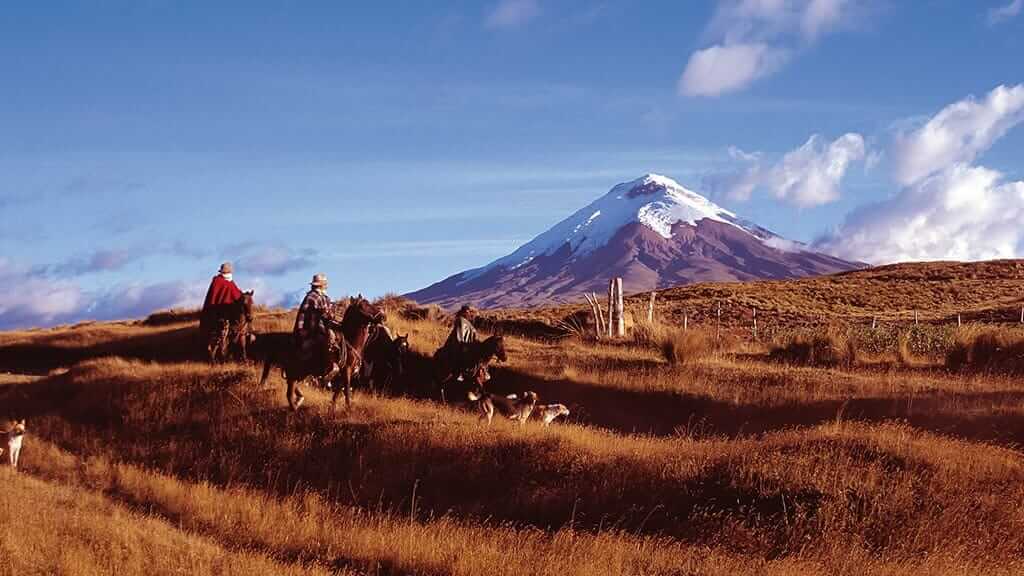
Climbing Cotopaxi Volcano
No activity list would be complete without an option to reach the 5,897m summit of Cotopaxi Volcano. Although not a technical climb, Cotopaxi is a tough challenge in terms of stamina, altitude and cold temperatures. Armed with ice-axe and crampons, climbers trek slowly upwards, tied together in groups of three (2 tourists with 1 guide). For the lucky few who make it, the early morning views from the summit of surrounding Andean peaks more than compensates for the pain of the journey.
Successful climbers can also enjoy unbelievable views of Cotopaxi’s 800×550m wide crater ... but don’t get too close when peering into the ominously dark and uninviting 250m drop.
Acclimatisation is highly recommended to improve your chances of reaching the summit. Our 6 day Andean Summits tour is a great way to climb more peaks, working up to the big one (Cotopaxi) on the final day.
The first climber to reach Cotopaxi Volcano’s aummit was German geologist Wilhelm Reiss in 1872. Eight years later British mountaineer Edward Whymper followed an alternative route – still used today and known as the Whymper Route.
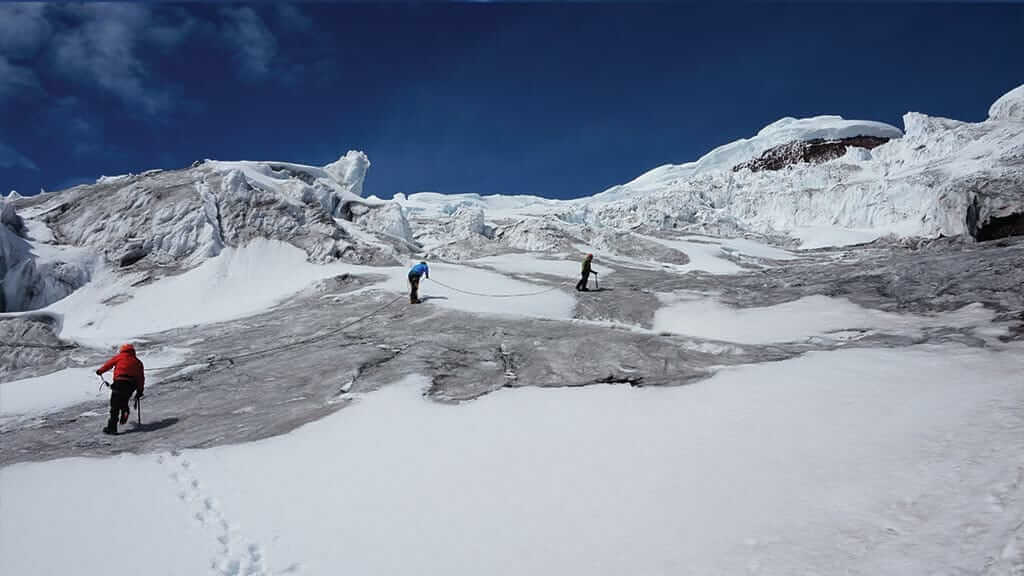
Wildlife Spotting
Some of the more common mammal sightings at Cotopaxi National Park include deer, llama, wild horses and rabbits. shyer creatures like puma, Andean bear and Andean fox are naturally more of a challenge to cross paths with.
For bird watchers, the area around Limpiopungo Lake is best for wading and shore birds. High altitude hummingbird species flit between orange Chuquiragua flowers. Throughout the rest of the park keep your eyes to
the sky for raptors like the Carunculated Caracara. On very lucky days visitors may even spot an Andean Condor.

Plantlife & Nature
The Andean Paramo habitat of Cotopaxi National Park is exposed and rather harsh for plantlife, but there is plenty of interesting flora if you know where to look.
The dominant plant is a sturdy straw-like grass which grows pretty much everywhere on the open plains. This area is also perfect for mosses, lichens and small Andean flowers.
Lower down, the habitat changes to humid mountain forest, although few native species remain.
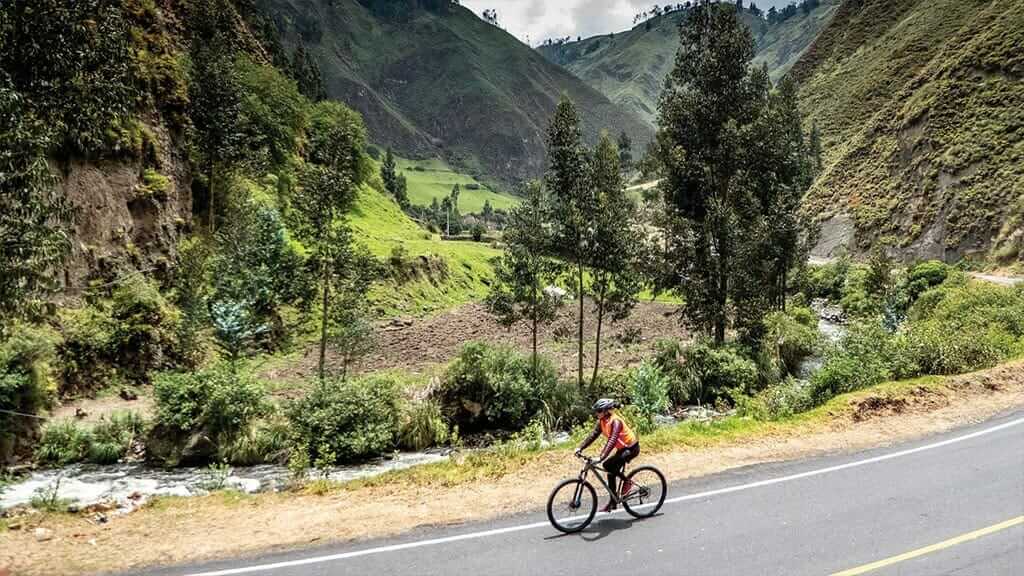
Cotopaxi Visitor Center
There is a small visitor center along the road from the main entrance. It’s worth a quick stop for some basic information about the park, and to use the restroom.
Typical Weather at Cotopaxi Ecuador
Up at high elevations in the Andes the weather is inevitably cold and unpredictable. The average Cotopaxi Park temperature is just 6 degrees Celcius, dropping to -4 at night.
Visitors should prepare for 4 season in one day – a strong sun when it shines, cold wind when it bites, and a reasonable probability of rain (or even icy hail). Whilst this weather forecast may sound quite miserable, in reality it helps to create this habitat so rich in interesting flora and fauna for visitors to enjoy.
Fortunately, most overnight accommodations provide open fireplaces and warm ponchos to combat the chilly temperatures.
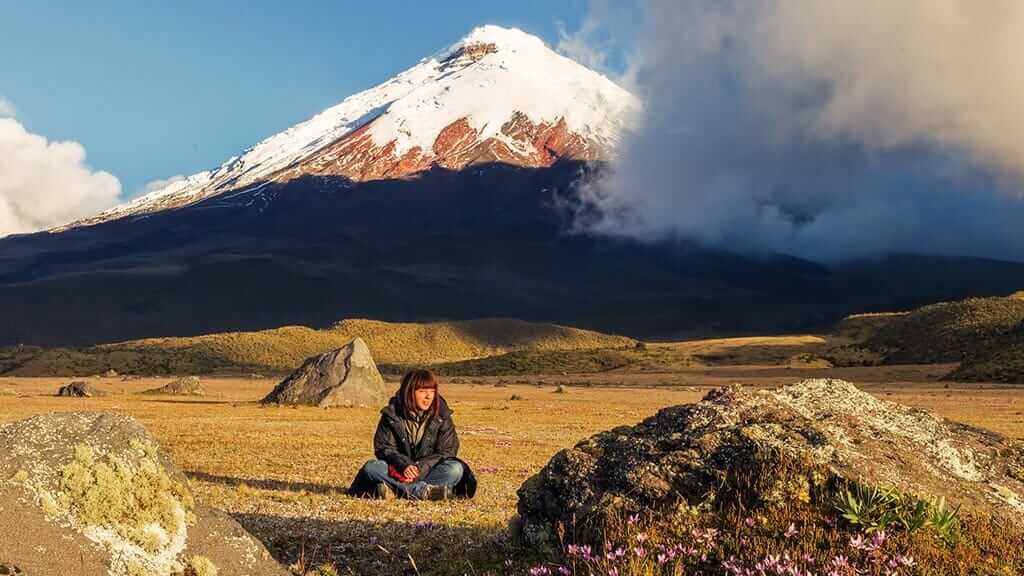
Practicalities for visiting Cotopaxi National Park
• Get there early to improve chances of clear skies and volcano views. It’s also best to visit during the week and avoid busy public holidays.
• Go prepared! Cold weather gear like gloves and wooly hat are recommended, as is rain gear and warm layers to keep the cold out. You’ll also need a good pair of walking boots. Sun protection is always required – sun glasses and high factor suncream to avoid burning, even on cloudy days. Also take lots of drinking water and energy snacks to keep you going.
• There is no entry fee, but visitors are required to register with a ranger at the park entrance.
• For lunch either take your own snacks along, or eat a simple meal at the volcano refuge hut.
• It’s possible to camp in the reserve, although nights are often bitterly cold. No pets are allowed.
• Drink lots of water to avoid any effects of altitude sickness. For more tips to help avoid altitude sickness, check out our Quito elevation blog.
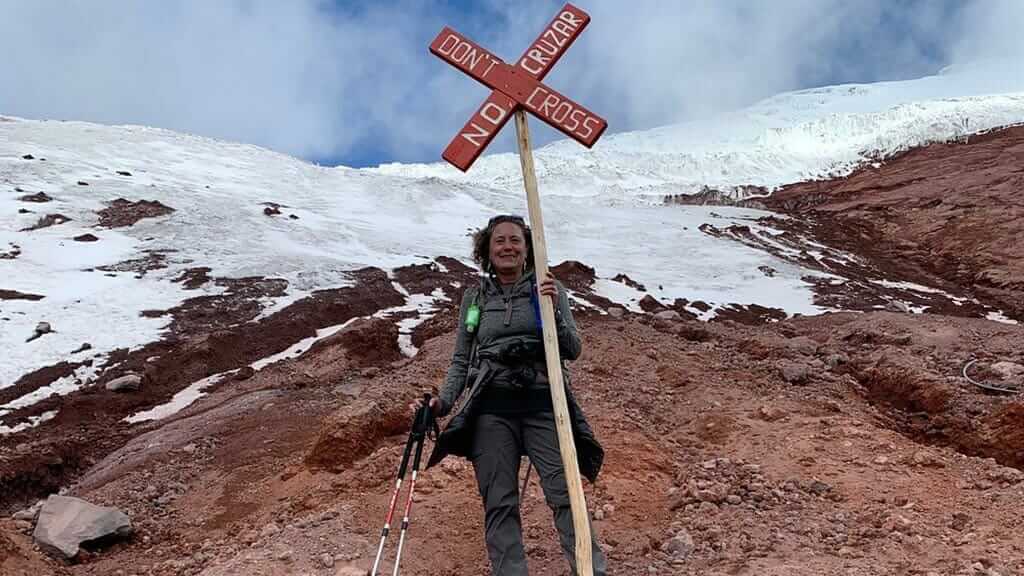
Contact us for a free tour quote – Happy Gringo specialise in custom-made trips right across Ecuador and Galapagos. We’ll be happy to include a trip to Antisana ecological reserve into a vacation itinerary for you.
Book with The #1 Trusted
Ecuador Travel Agency
In conclusion, Cotopaxi National Park is a must-see destination in Ecuador. On clear days your camera will be kept busy snapping the perfectly symmetrical volcano and breathtaking Andean scenery. Inquisitive nature lovers have plenty of flora and fauna to look out for. Adrenalin junkies are also covered with lots of adventure activities. So, get your hiking boots on, dress up warm, and head out from Quito for the perfect adventure!



